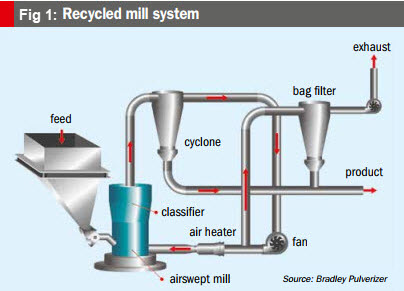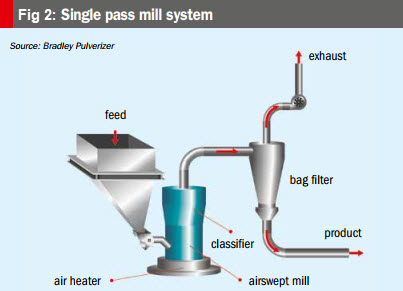Part 4 of a 5-part blog series: “The Importance of Phosphate Milling”
 Bradley Pulverizer’s Ian Hancock, VP of Sales & Operations, discusses the importance of a holistic understanding of the phosphate milling process to ensure maximum plant uptime, the highest process efficiencies and profitability. Click Here to download the complete article in pdf format as published by BCInsight Ltd in Fertilizer International July|August 2021, issue 503, pp. 49-52.
Bradley Pulverizer’s Ian Hancock, VP of Sales & Operations, discusses the importance of a holistic understanding of the phosphate milling process to ensure maximum plant uptime, the highest process efficiencies and profitability. Click Here to download the complete article in pdf format as published by BCInsight Ltd in Fertilizer International July|August 2021, issue 503, pp. 49-52.
The key to optimizing mill system performance is the ability to effectively remove on-specification particles from the airstream and direct these as feed to the processing plant. In addition to the air-swept mill and classifier, the other components of the mill circuit include:
- Fans and ducts for the pneumatic transport of crushed particles
- A bag filter that cleans dust-laden air in a single-pass mill system or maintains suction within recycled mill systems
- An integrated heater to reduce moisture and improve production.
Critically, these ancillary equipment items complete the circuit and minimize energy usage as well as ensuring continuous output. Two main types of mill systems are available:
- Recycled mill systems (Figure 1) are optimal for the coarser grade materials encountered in phosphate processing
- Single pass mill systems (Figure 2), meanwhile, are ideal for fine to ultrafine grade materials and those materials with a high moisture content.
Recycled mill systems are most common in the fertilizer industry. This is due to their ability to maintain cyclone efficiency, when processing particles above 30 microns, as well as their lower maintenance costs.
Once again, properly specifying and maintaining all the ancillary equipment that completes the mill system is critical for optimum performance. This is yet another reason why we encourage both mill operators and project engineers to always evaluate the entire system whenever results are not as expected.
The mill itself tends to get the lion’s share of attention because it occupies the heart of the system where the most aggressive action takes place. Paradoxically, though, attempting to overcome low yields by cranking up the mill’s power usually ends up compounding the actual cause of the issue. In practice, an undersized exhaust fan or unmaintained bag filter, for example, can contribute to low yields and inefficiencies just as often, if not more so, than the mill itself. In fact, when performance issues with the mill are identified, they do tend to be of the obvious sort – such as significant wear on the rollers or wear ring where the grinding of phosphate rock is most intense.
Contact Us if you have questions or need help selecting the right mill system for your operation.
(US) 855-670-8777 | (International) 0808-196-8141


